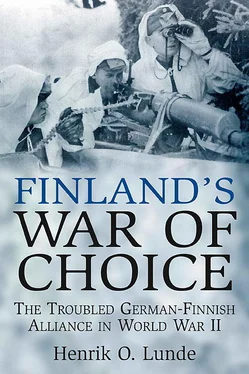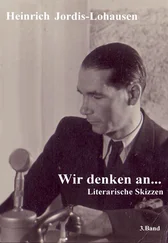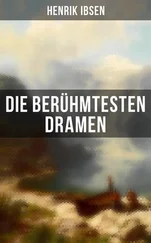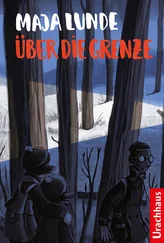The Soviet Union acted quickly to take advantage of the free hand given by the Germans in the Baltic region. Each of the Baltic states—Estonia, Latvia, and Lithuania—individually received an invitation for their foreign ministers to come to Moscow to negotiate. These negotiations ended in the Baltic states being forced to accept demands granting the Soviet Union bases and mutual aid pacts. Thereafter, these countries were independent in name only. Eventually, during the summer of 1940, they were absorbed into the Soviet Union.
Soviet–Finnish Negotiations
The announcement of the pact between the Soviet Union and Germany did not worry the Finns initially. They even felt safer since their two powerful neighbors had come to an understanding, thus lessening the chance of a war in the Baltic. This view was further strengthened by announcements by German officials. The German ambassador to Moscow, Count Friedrich Werner von Schulenburg, announced on August 30, 1939 that there had been no discussion of any spheres of influence to which Finland might belong at the Moscow meeting in August between Ribbentrop and Molotov. 9This blatant misstatement of facts was made possible because spheres of influence were spelled out only in the secret protocol mentioned above.
The Soviet Union significantly strengthened its defensive position in the west through the acquisition of air and naval bases in the Baltic states. However, Soviet leaders felt that the security of Leningrad would be menaced as long as they did not fully control sea and land approaches—Leningrad’s suburbs were located only around 30 kilometers from the Finnish border. 10
The Soviet government initiated negotiations with Finland on October 5, 1939, apparently expecting the latter to make concessions similar to those made by the Baltic states. It was suggested that Foreign Minister Väinö Tanner or his representative come to Moscow as soon as possible because the Soviets desired an exchange of ideas with Finland concerning certain political questions caused by the outbreak of World War II. Finland agreed on October 8 to send a representative to Moscow. 11
The Finns became alarmed over the Soviet request for negotiations. To prevent any surprises, several classes of reserves were called to the colors on October 10.
The Finnish foreign minister, Väinö Tanner, asked the German ambassador to Finland, Wipert von Blücher, to see him on October 6. Tanner stated that he did not know what the Soviets had in mind. He pointed out that while Finland was willing to make compromises, any demands involving the Åland Islands or Viipuri (Vyborg) would be rejected. The foreign minister also asked what the position of Germany would be if Finland found Soviet demands unacceptable. 12
Blücher forwarded a report of the conversation to Berlin. The answer from the director of the Political Department of the German Foreign Ministry arrived the following day. It stated that a conflict between the Soviet Union and Finland was unlikely but that Germany would remain neutral in any such conflict. 13
Juho Kusti Paasikivi—a former prime minister and ambassador to the Soviet Union—was selected to go to Moscow. He was instructed to make no commitments with respect to military bases on Finnish territory and adjustments of the border on the Karelian Isthmus. On the other hand, the exchange of certain islands in the Gulf of Finland for other territorial compensation was possible. 14
Sweden now became involved in the diplomatic maneuvering. The Swedish ambassador to Germany, Arvid Richert, called on German State Secretary Ernst von Weizsäcker on October 9, 1939 to enquire about Germany’s position on the current problems in Finnish–Soviet relations. Weizsäcker answered that he was unaware of any Soviet demands and that Finland had not been discussed during the visit to Moscow by the German Foreign Minister. 15
It was obvious to the political and military leaders in Finland that Germany would not provide armed assistance as she had in 1918, but they continued to hope for support in their Moscow negotiations. In his report from Helsinki on October 10, Blücher requested that the possibility of support be considered in one way or another without departing from their basic policy towards the Soviet Union. 16This request was turned down because it would imperil Germany’s relationship with the Soviet Union at a very critical time. 17
The question about Germany’s response should any or all of the Scandinavian nations come to Finland’s aid in case of a Soviet attack became more and more pressing as negotiations proceeded in Moscow. Blücher put the following question to the German Foreign Ministry at the request of the Finnish foreign minister on October 10: “Will Germany refrain from disturbing Sweden if Sweden should come to the aid of Finland militarily?” 18This and the following document (Document No 228) are the first indications that there was anxiety in Germany about possible Scandinavian intervention in a war between Finland and the Soviet Union. The answer came the same day and it stated that any promise to refrain from interference if Sweden sided with Finland militarily would be based on the condition that Sweden guarantee the continued deliveries of iron ore and refrain from giving France and Britain access to the Baltic. 19
In mid-October the Finns took a step to influence German public opinion, already strongly pro-Finnish, by proposing to send the popular former President Pehr Evind Svinhufund to Germany. The German foreign minister at once ordered Blücher to take appropriate steps to prevent his trip since it would endanger Russo-German relations. 20
The Soviets presented their demands on October 14. They included: (1) a readjustment of the border on the Karelian Isthmus; (2) a thirty-year lease of the port of Hanko for the purpose of establishing a naval base; (3) Suursaari and other islands at the eastern end of the Gulf of Finland; (4) an island commanding the entrance to the Bay of Viipuri; and (5) the Finnish part of the Rybachiy Peninsula, which would enable Russia to dominate the approach to Pechenga (Petsamo), Finland’s outlet on the Arctic Ocean. 21In exchange the Soviet government offered to surrender some 5,527 square kilometers of territory in Soviet Karelia along the eastern frontier of Finland, north of Lake Ladoga. 22
The proposed frontier changes on the Karelian Isthmus involved the resettlement of a considerable Finnish population, some valuable industrial areas, and Finland’s main defense works. The territory offered in exchange did not compensate for the Karelian territory in value, and Finland viewed it as a future bone of contention between the two countries since the area offered had a relatively large Russian population.
The Soviets insisted that their demands were minimal for the security of Leningrad. The negotiations were in limbo for the next two weeks until the Soviets made them public on October 31, 1939. The Finns felt that the announcement amounted to an ultimatum since the prestige of the Soviet Union as a great power would not permit a retreat from a stated public position. 23
Negotiations resumed on November 3, 1939 and a climax was reached on November 4. The Finns presented a memorandum in which the lease of Hanko was ruled out. Furthermore, Finland would not agree to the demolition of fortifications on the Karelian Isthmus since they were vital for security. 24The Finnish delegation left Moscow on November 13.
England, France, the Scandinavian countries, and the US presented notes to the Soviet Union expressing their hopes that the Soviets would not make demands on Finland which would lead to conflict. However, it appears that the Western powers as well as Germany believed that the Soviet Union would not resort to war.
When Dino Alfieri, the Italian ambassador to Germany, called on Weizsäcker on November 30 to clarify Germany’s position on the conflict that had just begun between Finland and the Soviet Union, Weizsäcker said that he could not tell him much since his information on the outbreak of hostilities and previous negotiations between Finland and the Soviet Union was scant. 25From this and other German Foreign Office documents, it appears that Germany believed that a war would not break out in the Baltic involving the Soviet Union and Finland. The embarrassment to Germany was increased by the fact that Italy, Germany’s closest ally, openly favored the Finnish cause. Italy had already begun to support Finland with arms and volunteers. However, German action in the evacuation of its citizens from Finland on a voluntary basis in late November indicated that they were not taken completely by surprise when hostilities broke out. 26
Читать дальше












